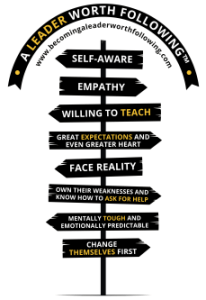What does it truly mean when we say that the best leaders have “great expectations and even greater heart”? At first glance, these phrases can feel like vague buzzwords tossed around in leadership seminars or platitudes featured on inspirational posters. But in the workplace, these two traits, when combined, can shape teams, empower individuals, and define organizations.
Let’s break it down with a real-life example that brings clarity to this powerful leadership principle.
The Mentor Who Modeled It Best
Doug Burey, a mentor whose impact lives on through the lives of those he led, exemplified this ideal. Doug was a leader who always set the bar high: his expectations were often so ambitious that they felt almost impossible to meet. But that wasn’t the end of the story.
When you tried your best and fell short, Doug didn’t respond with blame or disappointment. Instead, he met you exactly where you were. He lifted you up, dusted you off, and put you right back in the arena, encouraging you to try again with renewed energy and belief in yourself.
This is what “great expectations and even greater heart” looks like in action.
High Standards with Human Understanding
Setting high expectations drives progress. It pushes people to stretch beyond their perceived limits, tackle challenges head-on, and grow. But without heart – without compassion, empathy, and encouragement – those expectations can become overwhelming, even demoralizing.
That’s why the “greater heart” part is so essential. It tempers high expectations with grace.
In the workplace, this might look like:
- A team leader who sets ambitious project goals but offers support and flexibility when challenges arise.
- A manager who holds employees to high performance standards while celebrating effort and resilience, not just outcomes.
- A company culture that values trying, learning, and improving, even when the results aren’t perfect.
What It Looks Like Day-to-Day
Here’s how “great expectations and even greater heart” might show up in your organization:
- During performance reviews: Instead of focusing solely on missed targets, highlight effort, progress, and obstacles overcome. Recognize growth as well as results.
- When giving feedback: Be honest and clear about expectations but deliver feedback with kindness and the assumption of positive intent.
- In leadership development: Train leaders to challenge their teams while also providing emotional support, mentoring, and psychological safety.
- As self-leadership: Hold yourself to high standards, but when you fall short, don’t spiral. Reflect, recalibrate, and give yourself grace.
Why This Approach Works
When employees know that effort is recognized and that failure isn’t fatal, they’re more likely to take risks, innovate, and stay engaged. They trust their leaders. They feel safe to try, even when they might not succeed on the first attempt.
That kind of culture doesn’t just produce better results. It produces better people.
Final Thoughts
“Great expectations and even greater heart” is more than a catchy phrase; it’s a roadmap to being a leader worth following. Set the bar high. Encourage your people to rise. And when they stumble, meet them with compassion, not condemnation. Because, in the end, the heart behind the expectation is what keeps people moving forward.



